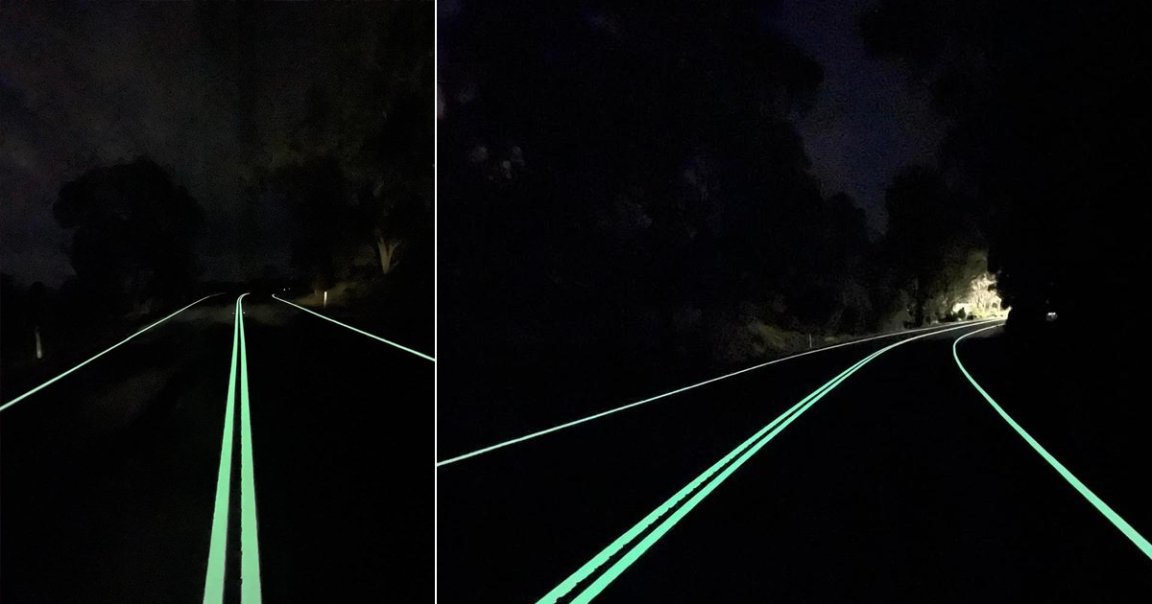
Light Itself
Images of glow-in-the-dark lane markings have gone viral this month, accumulating nearly 100,000 shares on Facebook, according to News.com.au — and they’re fascinating to look at.
The photoluminescent markings are part of a recently completed “trial run” by Tarmac Linemarking, a road construction company based in Victoria, Australia that’s gotten some government funding to experiment with new road treatments. This test in particular spanned across a one kilometer stretch of highway in the southeast of Victoria.
The effect is arresting. The markings turn your ordinary country road at night into something like a highway straight out of “TRON.” In addition to making a trippy drive, the road treatment will supposedly improve visibility of the markings themselves, nearby signs, and more clearly illustrate upcoming intersections and curves for drivers.
As is the case with photoluminescent applications, the coating absorbs energy from light throughout the day and releases it during the night, giving the coating its glowing effect.
According to a company spokesperson who talked to News.com.au, the light should last “most of the night” after a sunny day, but they were pretty vague on how that might be affected by overcast weather. But at the very least, they should be glowing during dusk hours when troublemaking critters like deer come out of hiding and teeter around the roads.
A Bright Future?
It’s a cool application — although not the first — but we should probably gather more data before rolling it out more broadly.
Is it a sustainable option in terms of cost, and how might runoff from the coating as it wears down affect the environment? We don’t really know.
And it has to be said, are glow-in-the-dark lane markings really any more effective or practical than the road reflectors already installed across countless streets and highways? Let’s not forget the already-in-use lane lines that boast retro reflective technology, which shine back at drivers with the light received from their headlights.
Instead, glow-in-the-dark lanes, if anything, will likely have a more niche application — maybe on some particularly dangerous-at-night stretches of road. Better yet, it could be used on pedestrian or bicycle paths, since neither is likely to have a strong light source of their own.
All in all, you probably won’t be seeing this treatment used very ubiquitously, but we envy the chance of seeing it in person.
More on transportation: Chinese Researchers Test Cars That Hover Over Road Using Magnets